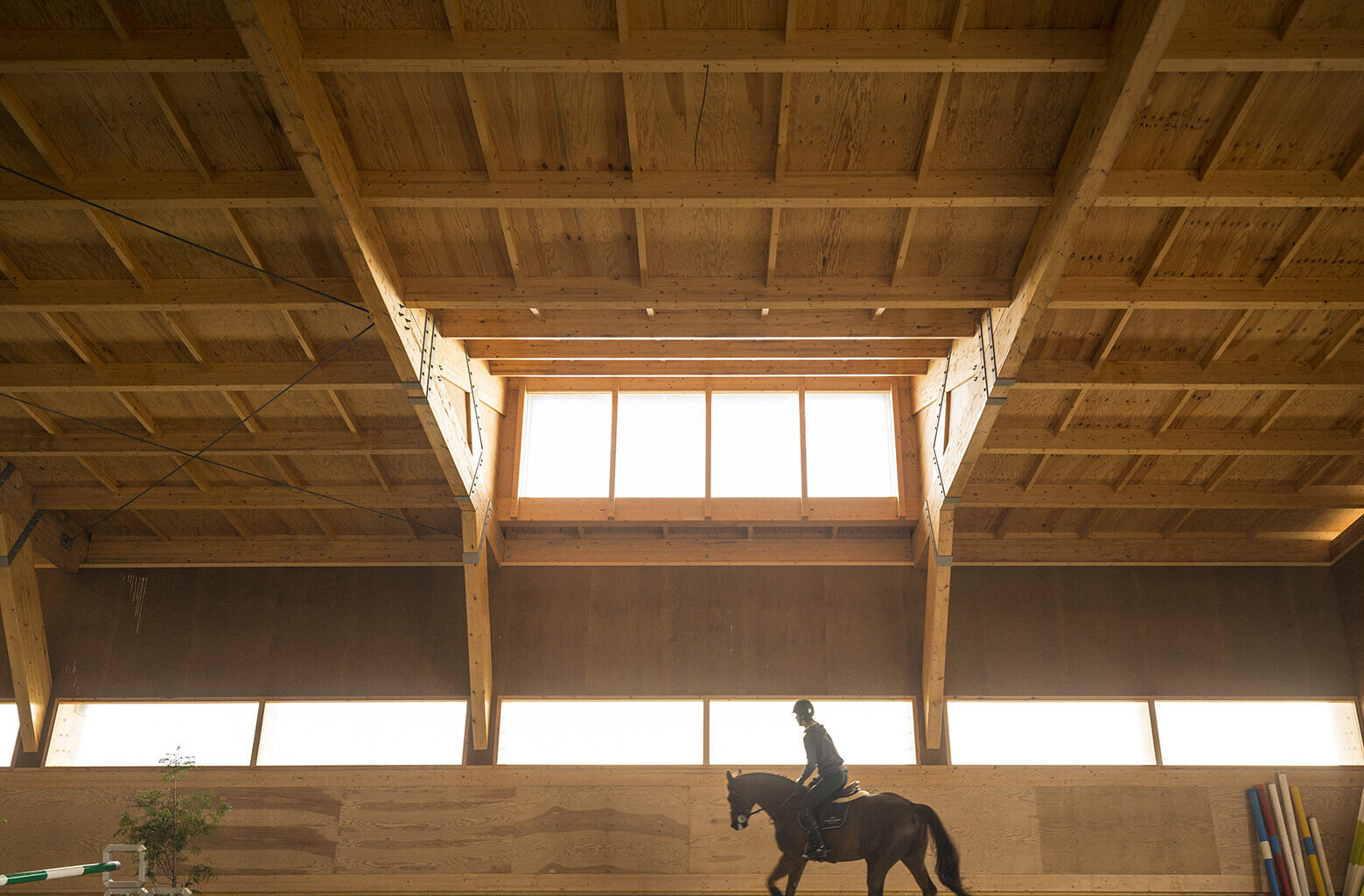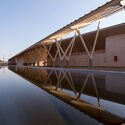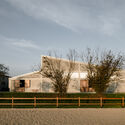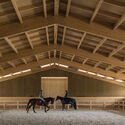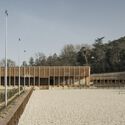 Arena at Equestrian Centre by Carlos Castanheira + Clara Bastai. Image © Fernando Guerra | FG+SG
Arena at Equestrian Centre by Carlos Castanheira + Clara Bastai. Image © Fernando Guerra | FG+SG
Share
Or
https://www.archdaily.com/1035643/designing-for-horses-8-projects-shaping-space-for-equine-life
Few commissions allow architects to focus on non-human users, and fewer still involve horses. While domestic pets like cats and dogs are common muses, the particular needs of horses present a unique challenge when designing stables. Since the horses, who are the stable’s primary inhabitants, cannot articulate their needs, design relies on the rigorous requirements dictated by human caretakers, requiring a balance between streamlined human operations and maximized horse comfort and safety. Architects often seem to address this through three core principles: Equine Comfort & Well-being, Contextual Materiality, and Operational Efficiency. Thus, the resulting layouts are characterized by rigorous zoning that clearly separates the programs into residential (stalls), service (tack, storage, wash, feed), and training spaces (arenas, walkers). The designs also address visual well-being: Horses are social animals, so they strategically position stables to promote sightlines between animals and to the exterior, often employing louvered or open-frame systems. Furthermore, lighting is kept diffuse using materials such as translucent panels to prevent sharp, stress-inducing shadows in arenas. Similarly, circulation paths are designed for the safe, efficient movement of both people and animals.
Regarding materiality, this category of farm architecture relies on a palette of natural, durable materials and forms that prioritize passive environmental control and integration with the rural context. The aesthetic seems to favor material honesty, often using exposed structures (timber or raw concrete and masonry), which provides longevity and facilitates proper wear and tear while maintaining visual integrity. At the same time, the building’s form is directly manipulated for the horses‘ benefit, with key strategies including altering roof geometry over the stable zones to facilitate high ceilings for better air exchange or to strategically control sunlight for hygiene. Finally, the form is often managed through two primary strategies: fragmentation into multiple, related units or the creation of a single, unified, and highly expressive roof plane (whether linear or curved) that organizes all programmatic elements beneath a linear form.


